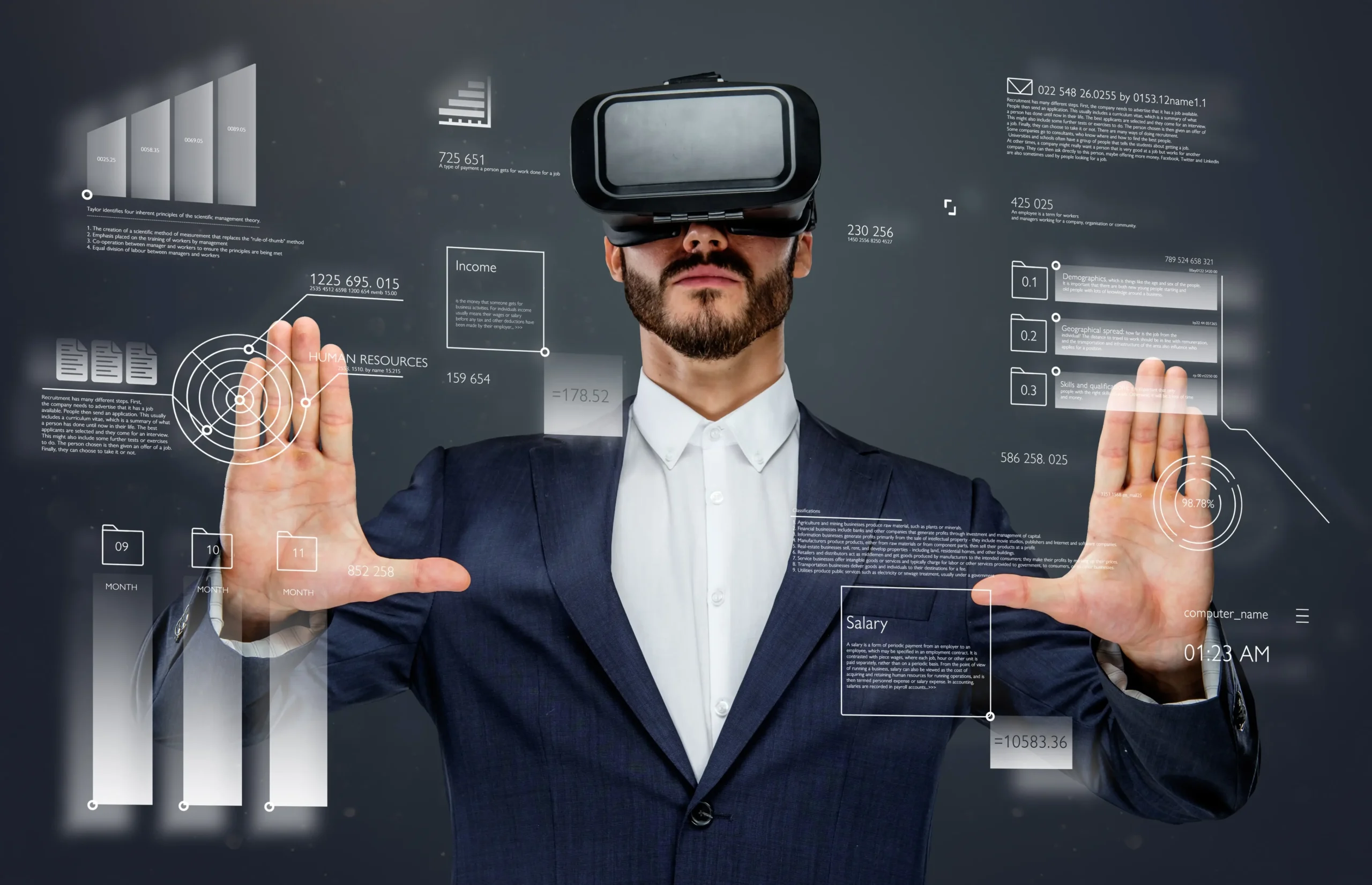Augmented Reality (AR) and Virtual Reality (VR)
In today’s world, the lines between what’s real and what’s digital are getting blurry. Two exciting technologies, Augmented Reality (AR) and Virtual Reality (VR) are leading the way in immersive experiences. They take us beyond traditional entertainment and are changing how we interact and how businesses operate worldwide.
In this article, we’ll talk about Augmented Reality and Virtual Reality and share real-world examples of how these technologies are changing things for the better.
What is Augmented Reality (AR)?
Augmented Reality introduces digital elements into the real world, overlapping computer-generated information over the user’s physical environment. This technology has made its mark in numerous fields, from gaming and marketing to healthcare and education.
One intriguing example of AR implementation in the USA market is the automotive industry. Ford, a renowned automaker, has adopted AR to enhance its vehicle design process. By using AR headsets, designers and engineers can visualize car components virtually. This makes it easier to optimize the design, test different configurations, and shorten the development cycle.
AR has also made its way into the retail industry, transforming the shopping experience. Sephora, a beauty retailer, offers an AR-powered app that enables customers to try on makeup products using their smartphones virtually. This interactive experience allows customers to explore various developments and make more informed purchase decisions, boosting customer satisfaction and sales.
What is Virtual Reality (VR)?
Conversely, virtual reality transports users into entirely synthetic environments, blocking out the physical world and enveloping them in a simulated reality. The impact of VR extends far beyond gaming and entertainment, Providing transformative strategies across various sectors.
Healthcare has witnessed significant advancements due to VR technology. Medical students can use VR headsets to practice surgeries, which is safe and affordable, without putting real patients at risk.
VR has changed mental health. Anxiety disorders are treated using exposure therapy which has been effectively adapted using VR. Patients can face their fears in a managed, virtual setting, which can lower their anxiety levels and enhance the results of therapy.
Mixed Reality – Blend of AR and VR
As technology advances, AR and VR convergence has led to the birth of Mixed Reality (MR). MR combines the digital and physical worlds, letting users interact with real and virtual objects at the same time.

One of the most influential applications of MR is in the field of education. For example, Case Western Reserve University utilizes MR technology to revolutionize medical education. Medical students can explore detailed, holographic representations of human anatomy to understand the human body’s complexities better.
In the retail industry, MR has introduced “smart mirrors,” enabling customers to try on clothing virtually. These mirrors use MR technology to superimpose digital clothing items on the customer’s reflection. This provides a unique and interactive shopping experience that transcends traditional fitting rooms.
The Future of AR and VR
The future of AR and VR holds immense potential, impacting industries and everyday experiences in unprecedented ways. According to Vnyz Research, the AR and VR market will reach 161.1 billion in revenue by 2025, experiencing a 48.8% growth CAGR during the projected period 2020-2025.
AR and VR will revolutionize collaboration, education, and training. The entertainment industry will push the boundaries with advanced VR headsets. In medicine, AR overlays aid surgeons, while VR therapies benefit patients. AR will enhance smart cities, while social media platforms will embrace AR and VR interactions.
AR-based navigation will become integral, and VR will transform travel and tourism. However, ethical and privacy concerns need addressing. Embrace these innovations responsibly, as the digital revolution has only just begun.
Conclusion
Virtual Reality provides almost real and/or believable experiences via a synthetic or virtual medium, while Augmented Reality augments the real world with computer-generated information.
With the convergence of Augmented Reality and Virtual Reality, new possibilities have opened up an enchanting world of possibilities. This has transformed industries and enhanced everyday experiences in the US market. From automotive design and healthcare education to retail and marketing, AR and VR continue to reshape the digital landscape.
As technology advances, we can only anticipate more innovative applications, ensuring that the journey through these immersive realms remains one of endless discovery and awe. Take advantage of the upcoming AR and VR Renaissance by embracing the digital revolution.







